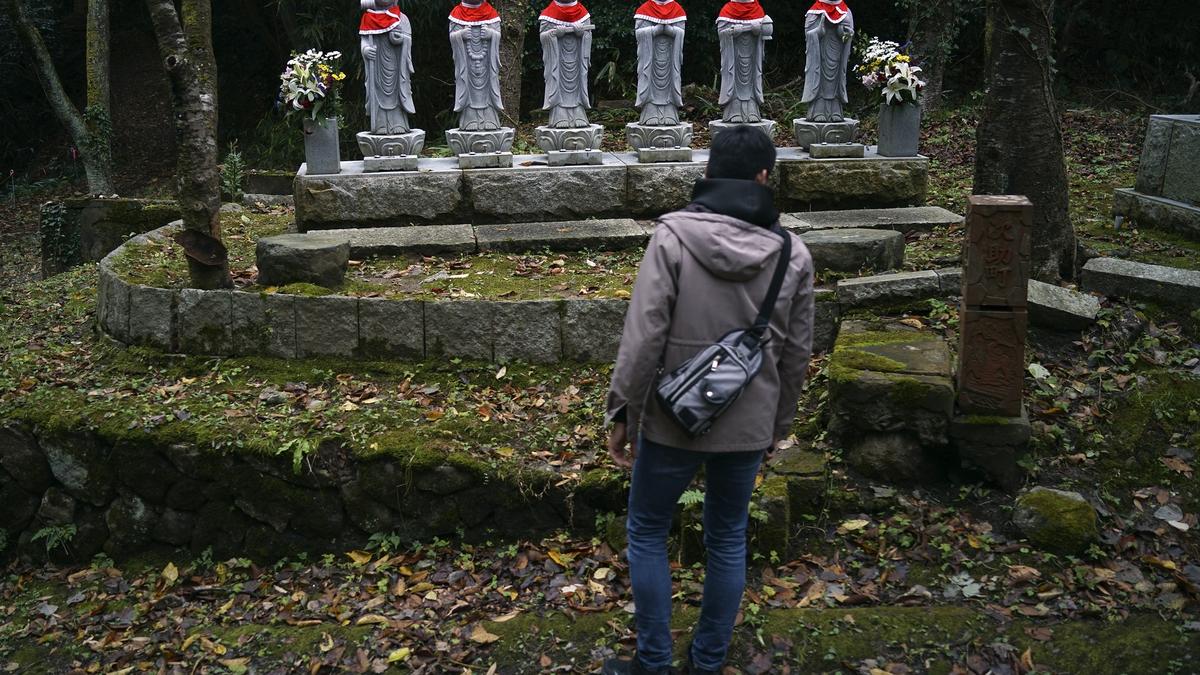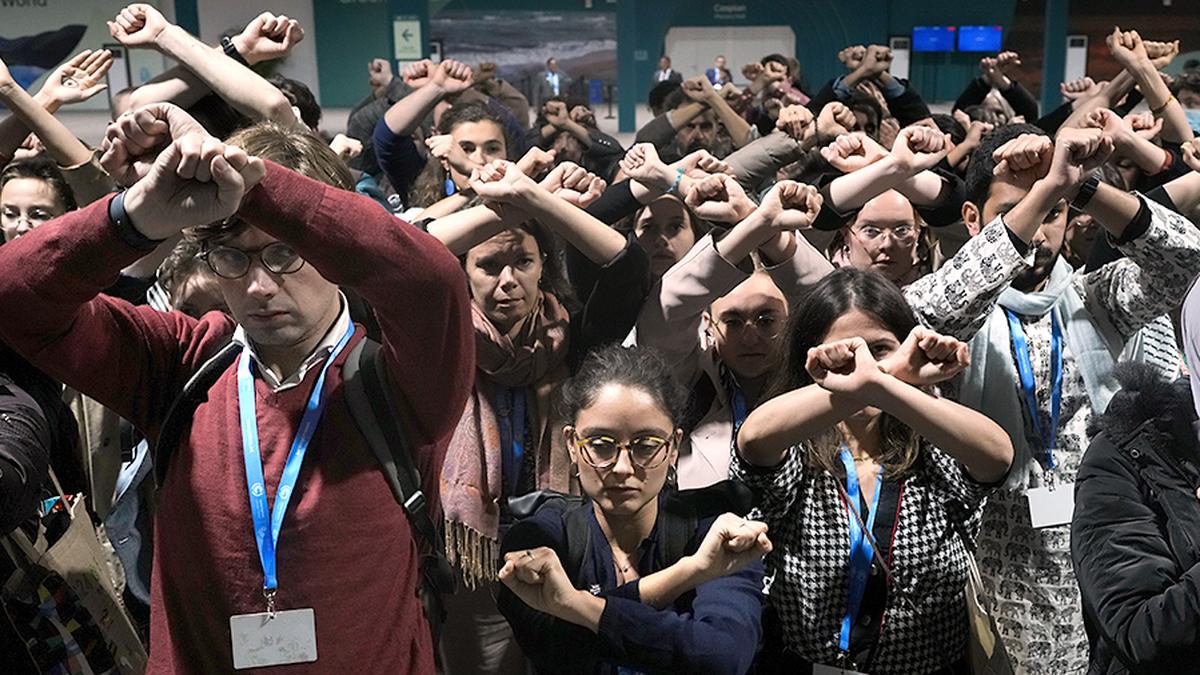The top U.N. humanitarian official accused Israel on Wednesday (October 16, 2024) of blocking the delivery of desperately needed aid to Gaza, and the U.S. Ambassador demanded that its government step up efforts to tackle the Palestinian territory’s ”intolerable and catastrophic humanitarian crisis.”
In Pictures: Israel-Hamas war — a year on
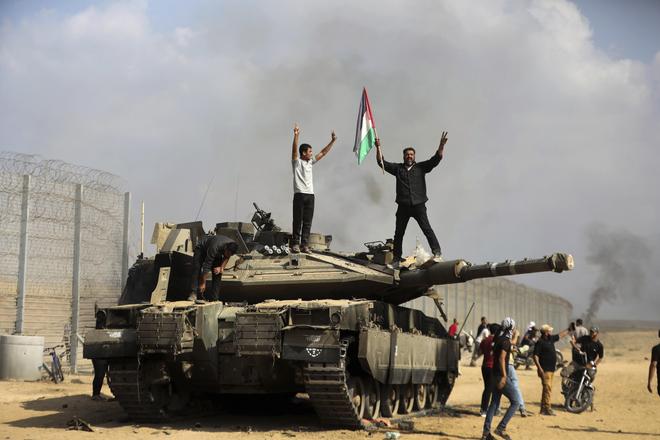
October 7, 2023: Hamas militants stormed across the border from Gaza into Israel in what would become the deadliest attack in the country’s history. At the end of the Jewish holiday of Sukkot, the militants launched their assault by land, air, and sea. Militants abducted 251 hostages on October 7, 97 of whom are still captive in Gaza, including 33 the Israeli military has said are dead.
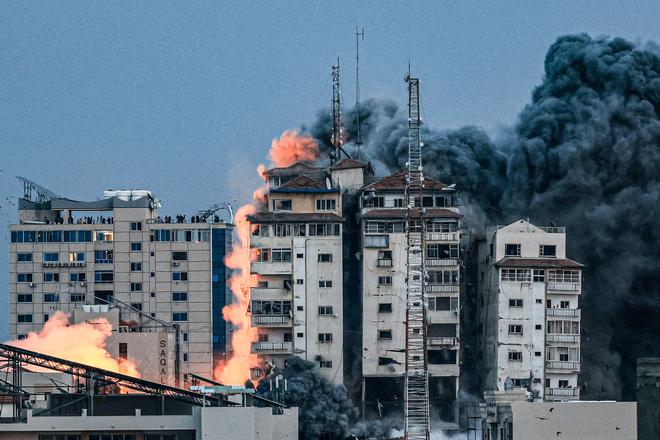
Soon after the attack, Israeli Prime Minister Benjamin Netanyahu announced “We are at war.” He declared a mass army mobilization. “Not an ‘operation,’ not a ‘round,’ but at war.” Israel battered Gaza on October 8 after suffering its bloodiest attack in decades, when Hamas fighters rampaged through Israeli towns killing 600 and abducting dozens more, as the spiralling violence threatened a major new war in West Asia. Israeli air strikes hit housing blocks, tunnels, a mosque, and the homes of Hamas officials in Gaza, killing more than 370 people, including 20 children, as Mr. Netanyahu vowed “mighty vengeance for this black day”.
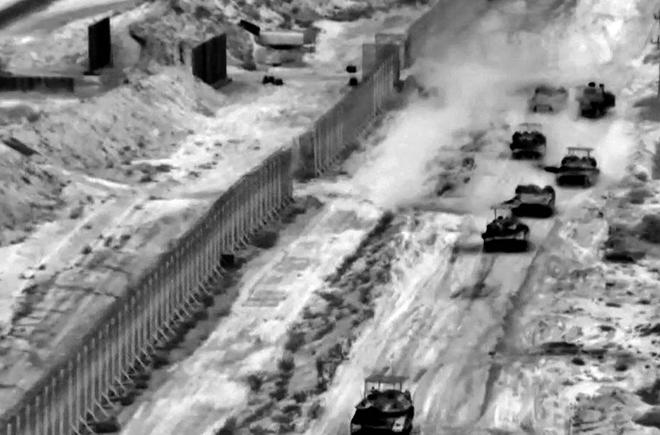
October 27, 2023: Internet and phone services collapsed in the Gaza Strip under intensified bombardment, largely cutting off its 2.3 million people from the outside world and each other, as Israel’s military “expanded” its ground operations in the besieged territory. The military’s announcement signalled it was moving closer to an all-out invasion of Gaza, where it has vowed to crush the ruling Hamas group after its bloody incursion in southern Israel three weeks ago. This screen grab taken from handout footage released by the Israeli army on October 26, 2023, shows a “targeted raid” in northern Gaza with tanks and infantry.
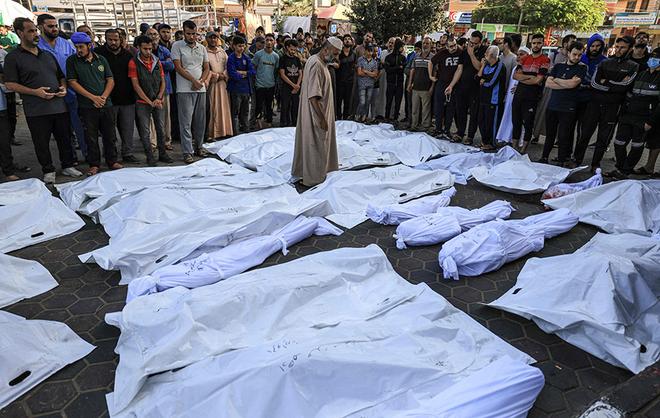
November 2023: Israeli forces struck near several hospitals in Gaza City as the military pushed deeper into dense urban neighborhoods in its battle with Hamas militants, prompting increasing numbers of civilians to flee toward the south of the besieged territory. Israel accused Hamas fighters of hiding in hospitals and using the Shifa Hospital complex as its main command center, which the militant group and hospital staff deny, saying Israel is creating a pretext to strike it. In this photo from November 6, 2023, a man walks between the bodies wrapped in shrouds of those killed in Israeli bombardment in Deir Balah in the central Gaza Strip, at the Shuhada Al-Aqsa hospital in the same city.

November 24, 2023: After 48 days of gunfire and bombardment that claimed thousands of lives, a four-day truce in the Israel-Hamas war began. Palestinian prisoners (wearing grey jumpers) cheer after being released from the Israeli Ofer military facility in Baytunia in the occupied West Bank in exchange for hostages freed by Hamas in Gaza, on November 24, 2023.
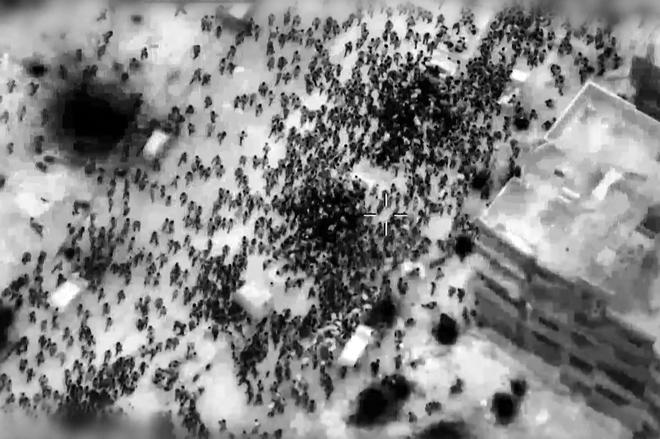
February 29, 2024: Israeli forces in war-torn Gaza opened fire on a crowd of Palestinians at an aid distribution point on February 29, killing at least 104 people and wounding over 700 according to Palestinian health officials. A witness told AFP that the violence unfolded when thousands of people desperate for food rushed towards aid trucks at the city’s western Nabulsi roundabout. This image grab from a handout video released by the Israeli Army shows what the Army says are Gazans around aid trucks in Gaza City.
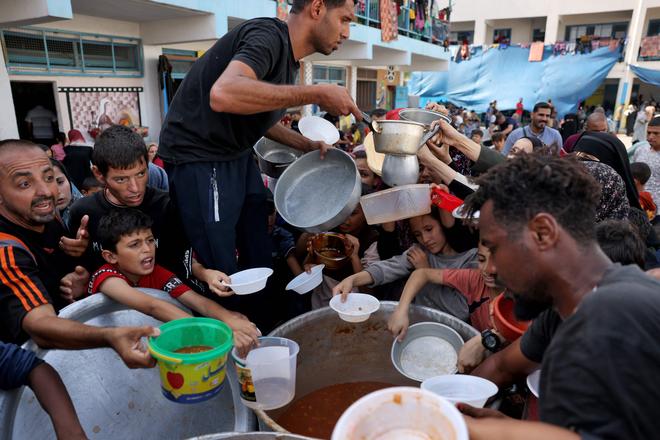
March 2024: The U.N. warned that Israel’s severe restrictions on aid into war-ravaged Gaza coupled with its military offensive could amount to using starvation as a “weapon of war”, which would be a “war crime”. The devastating war since Hamas’s October 7 attack on Israel has left roughly half of Gazans — around 1.1 million people — experiencing “catastrophic” hunger, the assessment said. In this photo from October 2023, Palestinian children receive food at a UN-run school in Rafah, on the southern Gaza Strip.
March 2, 2024: U.S. military C-130 cargo planes dropped food in pallets over Gaza. The airdrop was the first of many announced by President Joe Biden on. The aid was be coordinated with Jordan, which has also conducted airdrops to deliver food to Gaza. Since the war began on Oct 7, Israel barred entry of food, water, medicine and other supplies, except for a trickle of aid entering the south from Egypt at the Rafah crossing and Israel’s Kerem Shalom crossing.
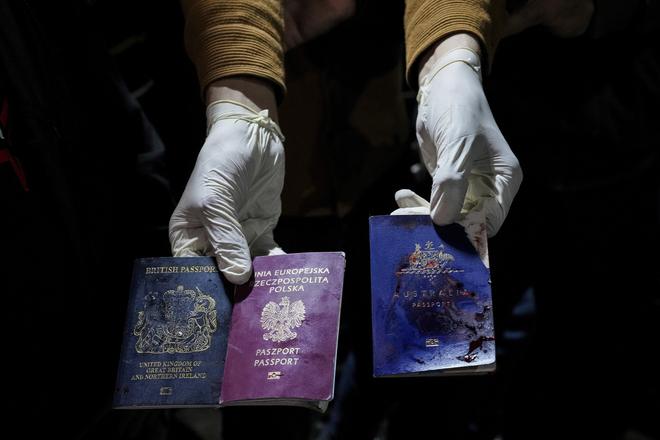
April 2, 2024: An Israeli airstrike kills six international aid workers with the World Central Kitchen charity and their Palestinian driver, hours after it brought a new shipload of food into northern Gaza. Footage showed the bodies of the dead at Al-Aqsa Martyrs Hospital in the central Gaza town of Deir al-Balah. Several of them wore protective gear with the charity’s logo. In this photo, a man displays the blood-stained British, Polish, and Australian passports.
April 13, 2024: Iran launched multiple drones toward Israel, marking the first time Iran had ever launched a full-scale military assault on Israel, despite decades of enmity dating back to the country’s 1979 Islamic Revolution. Iran had been threatening to attack Israel since an airstrike last week killed two Iranian generals in Syria. Israel has not commented on that attack, but Iran accused it of being behind it. This photo shows an anti-missile system operates after Iran launched drones and missiles towards Israel, as seen from Ashkelon, Israel.
May 7, 2024: An Israeli tank brigade seized control on of the Gaza side of the Rafah crossing with Egypt as Israel moved forward with an offensive in the southern city. Israeli tanks moved into the southern part of the city overnight, while warplanes bombed areas near the crucial Rafah border crossing, killing at least 23 Palestinians and injuring several others. The invasion, described by the U.S. as a “limited operation,” unfolded a day after the Israeli military ordered over a million people sheltering in Rafah to evacuate parts of the southern Gaza Strip city and relocate to an “expanded humanitarian zone” near Khan Younis, in preparation for an assault to “eradicate” Hamas. Photo shows Israeli military vehicles operate in the Gazan side of the Rafah Crossing.
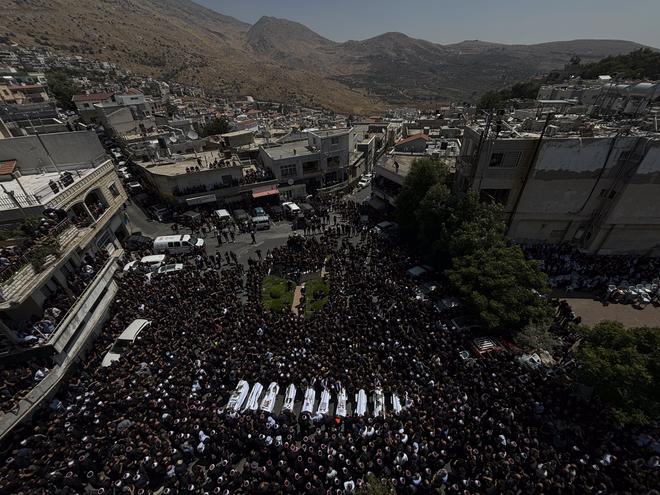
July 27, 2024: A rocket attack on a soccer field in the Israeli-controlled Golan Heights killed 12 children and wounded several others, hours after an Israeli airstrike on south Lebanon killed three members of the militant Hezbollah group. The strike, the deadliest attack on an Israeli target since the fighting between the two foes erupted in October 2023, raised fears of of a broader conflagration in the region. This photo shows mourners from the Druze minority surround the bodies of some of the 12 children and teens killed in a rocket strike at a soccer field, during their funeral, in the village of Majdal Shams, in the Israeli-annexed Golan Heights.
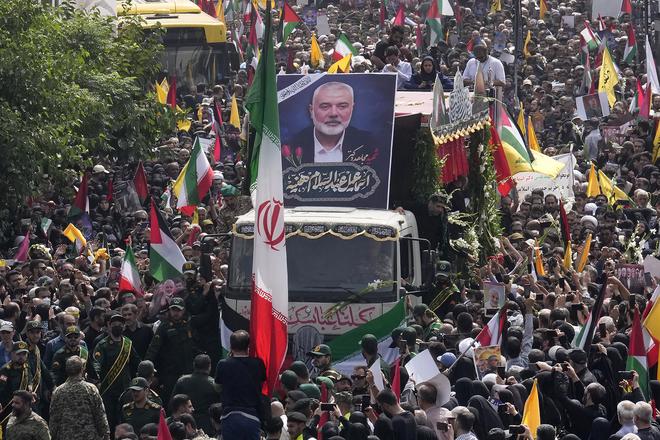
July 31, 2024: The political leader of the Palestinian militant group Hamas Ismail Haniyeh, was killed in an Israeli strike in Iran, where he had been attending the inauguration of the country’s new president. Haniyeh was elected head of the Hamas political bureau in 2017 to succeed Khaled Meshaal, but was already a well-known figure having become Palestinian prime minister in 2006. This photo shows Iranians follow a truck, center, carrying the coffins of Hamas leader Ismail Haniyeh and his bodyguard, during their funeral ceremony at Enqelab-e-Eslami (Islamic Revolution) Sq. in Tehran, Iran, on August 1, 2024.
August 28, 2024: Israel pressed on with a large-scale military operation in the occupied West Bank. Hamas said 10 of its fighters were killed in various locations, and the Palestinian Health Ministry reported an 11th casualty, without saying whether he was a fighter or a civilian. An Israeli vehicle operates on the road during an Israeli raid in Nour Shams camp in Tulkarm, in the Israeli-occupied West Bank, on August 29, 2024.
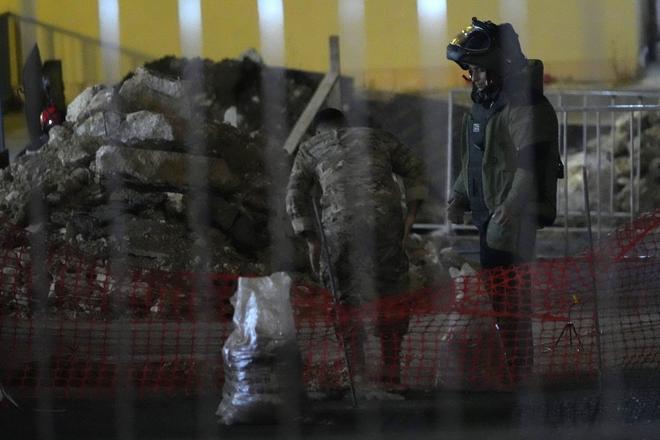
September 18, 2024: In a sophisticated, remote attack, pagers used by hundreds of members of Hezbollah exploded almost simultaneously in Lebanon and Syria killing at least nine people — including an 8-year-old girl — and wounding thousands more. A Lebanese army bomb disposal specialist wearing a protective gear prepares, with his comrade, to detonate a walkie-talkie that was found at the parking of the American University Hospital, in Beirut, Lebanon.
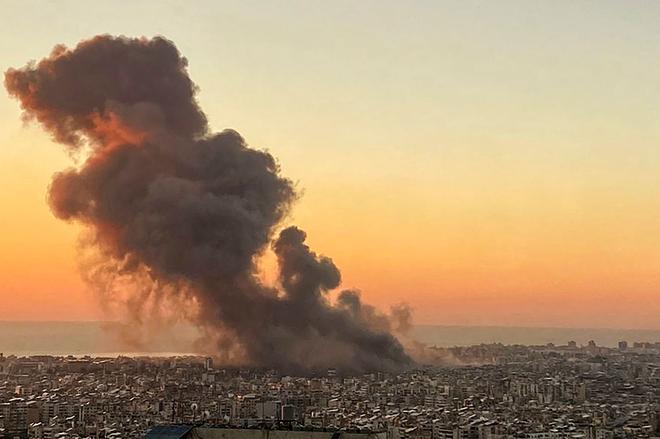
September 27, 2024: A wave of air raids hit Beirut’s southern suburbs early on as Israel stepped up attacks on Hezbollah, after a massive strike on the Iran-backed movement’s command centre that ended up killing the group’s leader Hassan Nasrallah. Photo shows smoke rising above Beirut’s southern suburbs on September 27, 2024.
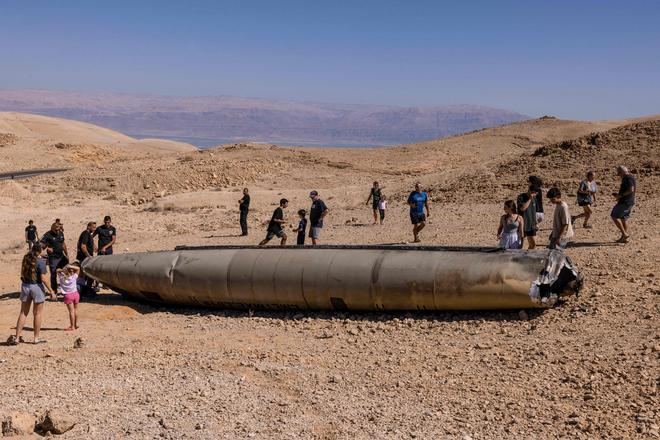
October 1, 2024: Iran fired a salvo of ballistic missiles at Israel in retaliation for Israel’s campaign against Tehran’s Hezbollah allies in Lebanon. Iran has vowed to retaliate following attacks that killed the top leadership of its Hezbollah allies in Lebanon. The firing of missiles came after Israel said its troops had launched ground raids into Lebanon, though it described the forays as limited. People are seen visiting the site of the remains of an Iranian missile in the Negev desert near Arad in the aftermath of an Iranian missile attack on Israel.
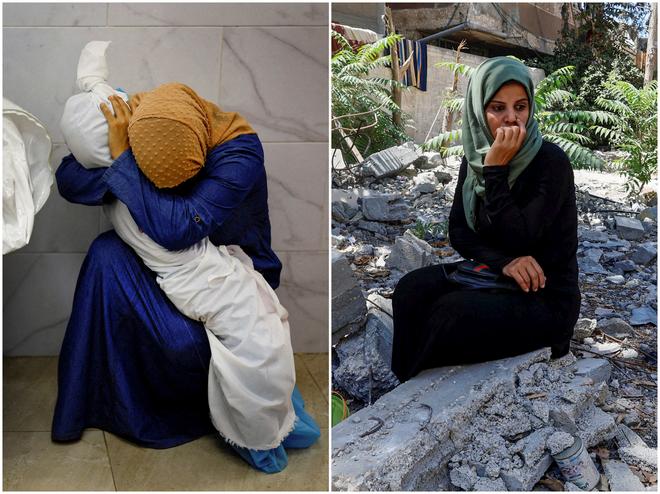
A combination picture shows Palestinian woman Inas Abu Maamar, 36, embracing the body of her 5-year-old niece Saly, who was killed in an Israeli strike, at Nasser hospital in Khan Younis in the southern Gaza Strip, on October 17, 2023 (L). Reuters photographer Mohammed Salem won the prestigious 2024 World Press Photo of the Year award for this image. In the second image Inas visits a damaged cemetery where Saly was buried, in Khan Younis in the southern Gaza Strip, on September 11, 2024.
1/3
Acting humanitarian chief Joyce Msuya and U.S. Ambassador Linda Thomas-Greenfield stepped up the pressure on Israel at an emergency meeting of the U.N. Security Council on the escalating humanitarian emergency, especially in northern Gaza.

The council meeting, called by Algeria, the Arab representative on the council, followed a U.S. warning to Israel to boost aid efforts dramatically or risk losing funding for weapons from its main supplier. The Biden administration gave Israel 30 days to take a number of actions, including sending 350 trucks with food and other aid into Gaza every day.
Israel’s U.N. Ambassador Danny Danon insisted that his country’s humanitarian efforts remain “as comprehensive as ever” and criticized the council for focusing on the humanitarian situation in Gaza while Israeli civilians “are being targeted daily by those who seek our destruction.”
Also Read: Netanyahu mulls plan to empty northern Gaza of civilians and cut off aid to those left inside
He said Israel has delivered over 1 million tons of aid, including 700,000 tons of food, to Gaza since it launched its military operation after Hamas’ surprise attack in southern Israel on Oct. 7, 2023.
Mr. Danon accused the international community of missing the real issue — which he said was Hamas’ hijacking of aid shipments while fellow Palestinians suffer.
Also Read: The politics of humanitarian aid
“This makes it incredibly difficult to ensure that the aid reaches its intended recipients,” he said. But Israel remains committed to working with its partners to deliver aid, “even under these dangerous and morally reprehensible conditions.”
Msuya, the top U.N. aid official, painted a grim picture, telling the council that there is barely any food left in northern Gaza where an Israeli offensive is underway. No food entered the north from Oct. 2 to Oct. 15 “when a trickle was allowed in,” she said, and “most bakeries will be forced to shut down again in the next several days without additional fuel.”
Throughout Gaza, Msuya said, less than one-third of the 286 humanitarian missions coordinated with Israeli authorities in the first two weeks of October “were facilitated without major incidents or delays.”
The level of suffering in Gaza worsens every day, she said, as Israeli bombs continue to fall, fierce fighting continues, and “supplies essential for people’s survival and humanitarian assistance are blocked at every turn.”
Riyad Mansour, the Palestinian U.N. ambassador, accused Israel of besieging, bombing, and starving 400,000 Palestinians in northern Gaza as part of its all-out war against the Palestinian people.
“These are crimes,” he said. “This is genocide. They must be stopped — and they must be stopped now.”
Thomas-Greenfield, the U.S. ambassador, pointed to some new Israeli commitments since the U.S. warning and two dozen trucks entering northern Gaza for the first time in several weeks.
But she said Israel’s progress since last week is “insufficient” and stressed that it must follow through on its commitments, including opening more border crossings and routes and taking steps “to help secure delivery routes against armed gangs involved in violent looting.”
“A `policy of starvation’ in northern Gaza would be horrific and unacceptable and would have implications under international law and U.S. law,” the U.S. ambassador warned. “The government of Israel has said that this is not their policy, that food and other essential supplies will not be cut off, and we will be watching to see that Israel’s actions on the ground match this commitment.”
At the council meeting, there were repeated calls by members for action by the U.N.’s most powerful body to end the more than yearlong war in Gaza.
Guyana’s U.N. Ambassador Rodrigues Birkett lamented that 47 Security Council meetings and four legally binding resolutions in the past year, including demands for a cease-fire, “have not had the expected results, and the situation in Gaza continues to worsen with each passing day.”
“We must not allow the shredding of the moral and legal thread that holds our organization together,” she said. “The most fundamental question then that this council faces is, what will we do to stop this tide?”
Thomas-Greenfield urged all council members to support the U.N. as it works with Israel to step up aid deliveries. She said the U.S. focus in the coming months will be “getting humanitarian aid in, getting hostages out, and ending the conflict.”
Published – October 17, 2024 07:49 am IST



